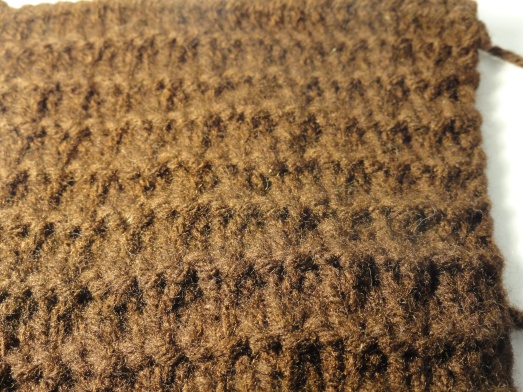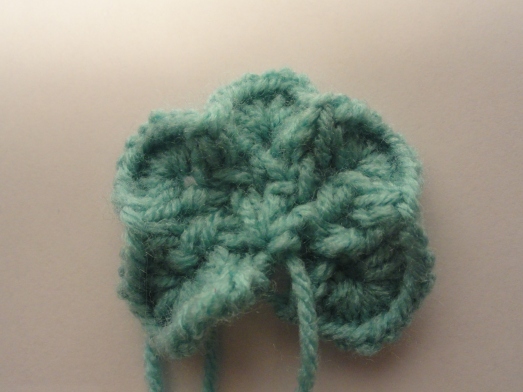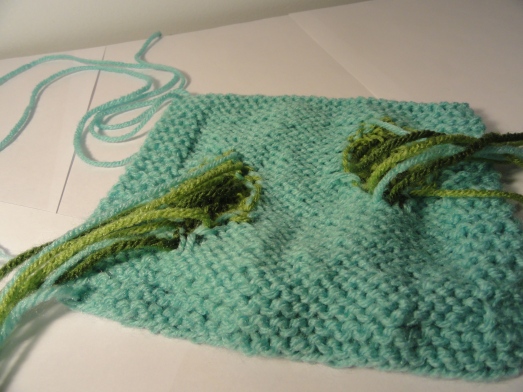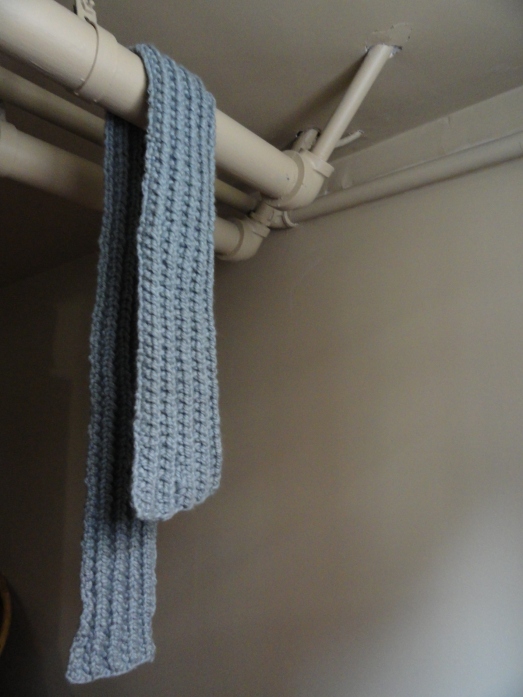I have continued knitting my sample squares this week from Margaret Hubert’s book “The Complete Photo Guide to Knitting”. This week, the textures have started to get a little bit more complex. I have also been experimenting with finding the best indoor lighting for my pictures. I find my camera sometimes has a hard time with the close-up pictures of fine yarn textures, but with a little practice, I think I will be able to improve the quality of the shots. The patterns I have learned this week are:
Berry


Tiny Pebbles

Braids

Crossed Diamonds – This was my first introduction to “Cross Two Stitches Left (Cr2L)” and “Cross Two Stitches Right (Cr2R)”. I did not find the stitch too difficult in itself, but sometimes found I had to keep a finger on the point of the needle while I worked the back stitch to keep the front stitch from slipping off prematurely.

Horizontal Nubs


Airy Garter Stitch

I also jumped ahead a little bit to try out some shaping, making a small flower and a small leaf.


And finally, in anticipation and preparation for knitting a gift in colour work, I tried my first sample of Intarsia knitting. Using graph paper, I drew out two leaves in a square. Since Intarsia knitting works in stockinette stitch, I surrounded the piece in four stitches and four rows each direction of garter stitch to prevent rolling.


But I haven’t yet learned how to weave in the tail ends.

Maybe next time I try this sample, I will use one strand of the light green for both sides of the leaf, crossing the stem Fair Isle style, so that I have less threads hanging at the back.
Things I have learned this week:
- The hardest part about knitting is learning to read the patterns. Finding videos online can be helpful in deciphering confusing descriptions.
- Knitting a test swatch to check for gauge is very important if you are trying to knit a specific size piece. In the 5″ square I have been making, all using the same kind of yarn and the same needles, my gauge has sometimes varied by 1 stitch per inch or more.
- Creating fancy stitches such as purl 3 together, or cross two stitches left or right, is easier on a needle which provides a longer tapering to the point, because it provides a loosening of several stitches to work with, without bringing them too close to the end where then may slip off. The 6mm needles that I have been practicing with take about 2cm to narrow to a point, but my 3.75mm needles only provide about 1cm to work with at the front of the needle.
- Binding off is much more versatile than I had originally thought. The bind off method of knitting two stitches, then slipping the first stitch over the second and off the needle can be modified into a lot of other stitches in a pattern. I think the method might better be described as, “create two stitches as described in your pattern, then slip the first stitch over the second and off the needle.” For example, In the Crossed Diamonds pattern, the series I was supposed to be using on the bind off row was “K3, *k1, Cr2R, k3, rep from * to last st, end k1”. To bind off this row I would knit the knit stitches and cross the crossed stitches as directed before slipping the first stitch over the second and off the needle.





























